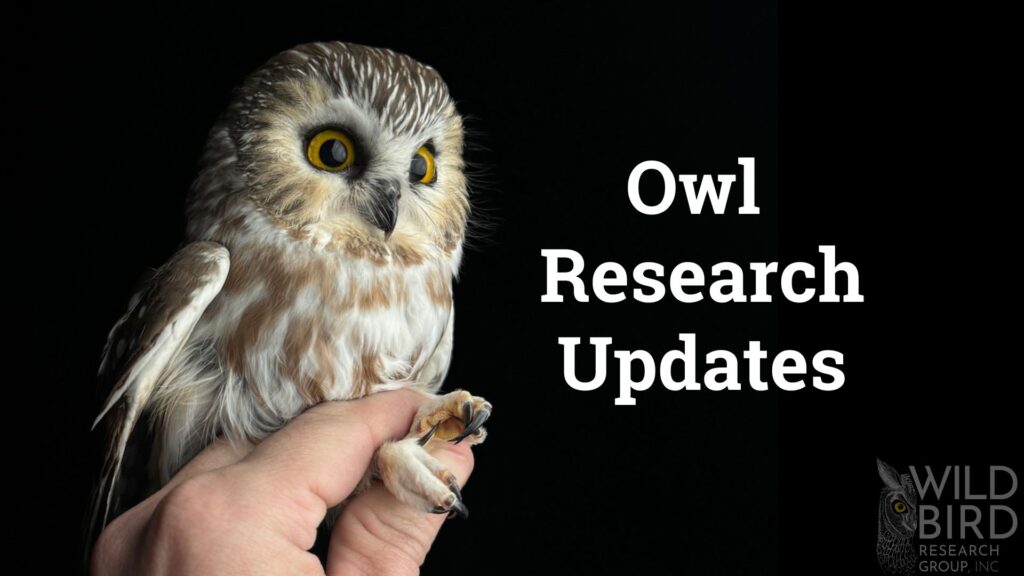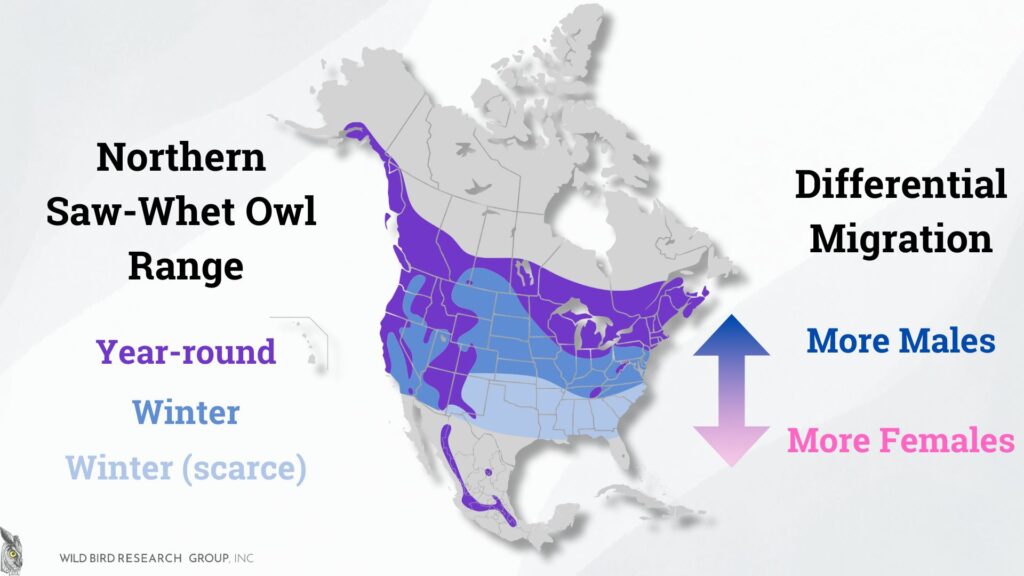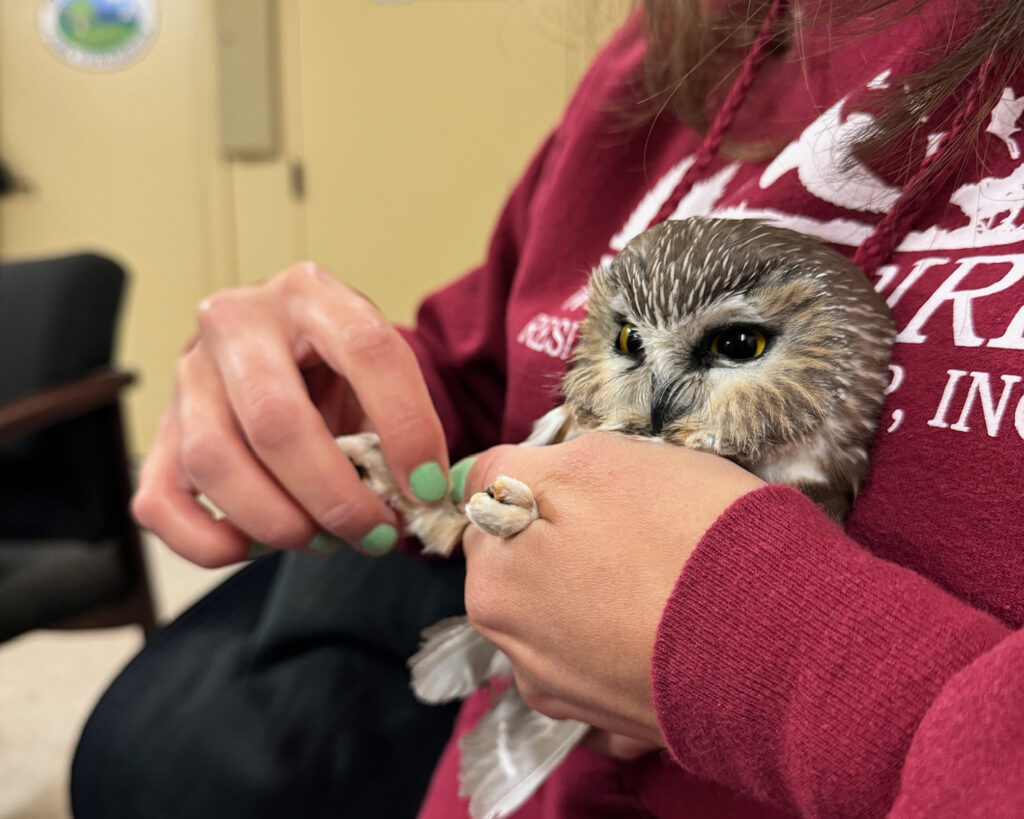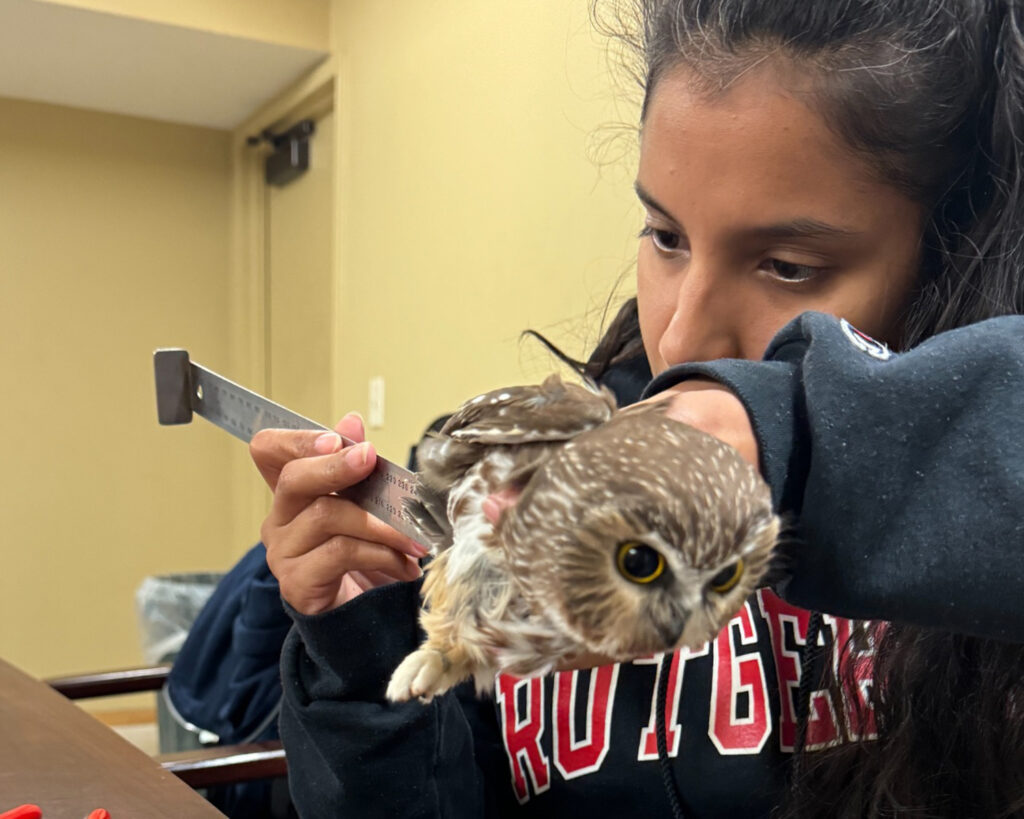
Article by Sean Graesser
As the leaves begin to change and the chill sets in, so too begins our annual study of Northern Saw-whet Owls (Aegolius acadicus). This year’s migration season is already showing some intriguing trends, marked by a particularly high number of hatch-year females in the early stages of migration. With around 50 owls encountered so far, our research team has observed a significant uptick in these young females, suggesting a productive breeding season to our north—possibly influenced by changing environmental conditions.

Differential Migration of Northern Saw-whet Owls
Northern Saw-whet Owls, like many bird species, exhibit what is known as differential migration, where males and females migrate at different times and often to different distances. In general, female saw-whets, especially younger ones, migrate farther than males, likely to reduce competition for food and territory. Adult males tend to remain closer to breeding grounds to reclaim territories early in spring, while adult females may journey further south. Hatch-year owls, being less experienced, often travel the greatest distances as they explore new territories and establish initial survival skills.

An Early Surge in Hatch-Year Females
In a typical migration season, we expect to see a mix of males and females, with hatch-year birds generally appearing in greater numbers later in the season. However, this year has been unusual in that the vast majority of owls captured so far have been hatch-year females. Encountering 50 individuals at this early stage suggests a productive breeding season, which could indicate a population boom in breeding grounds north of our research station. Such a surge is not only surprising in its timing but also in the sheer volume of young females, raising questions about the underlying causes.
The Role of Environmental Factors
One potential driver of this phenomenon could be the recent wildfires in Canada, which have had wide-ranging ecological impacts. While wildfires can cause immediate devastation, they also create nutrient-rich environments that often result in population booms of small mammals, including the rodents that owls prey upon. Increased prey availability would improve the reproductive success of the owl population, particularly for hatch-year individuals that depend more on abundant food supplies to fuel their early migration.
Moreover, the fires might have displaced adult females and pushed them south earlier than usual. In contrast, juvenile females, benefiting from plentiful prey, have begun their southern journey earlier than in past years. This combination of factors may help explain the higher-than-usual numbers of hatch-year females we are currently observing.

What Lies Ahead
The high numbers early in the season could be a positive sign for the population’s health, reflecting both a strong breeding season and good survival rates among young owls. However, it also presents a unique opportunity for our research team to gather data on these hatch-year females, offering insights into survival strategies, habitat use, and potential influences of climate and environmental change.
As migration progresses, we anticipate observing a broader mix of ages and sexes, which will help us understand the full dynamics of this year’s migration. Meanwhile, the initial burst of young females provides an exciting start to a season filled with potential discoveries about these enigmatic and endearing raptors.
Stay tuned for further updates as our research continues, and as always, we appreciate the support of our volunteers, partners, and community members who make this vital work possible. Here’s to a season of successful research and continued understanding of the Northern Saw-whet Owl’s fascinating migratory behavior!

